The Bruce Brothers: How Two Scottish Siblings Kick Started the Indian Tea Trade
3-4 minute read
By Alex Cox | January 10, 2016

On January 10th 1839, Indian tea went on sale in Britain for the first time in history. Chinese tea, originally advertised as 'china drink', had been popular in England since the mid seventeenth century and by the beginning of the 19th century, British merchants and leading figures in the British East Indian Company were examining the possibility of imported China seeds thriving in the Assam region of Northeast India.
In 1823, Scottish trader and explorer Robert Bruce visited Rangpur, the capital of the Ahom Kingdom in Upper Assam. He had journeyed to the region many times before, but this particular excursion had a very special purpose. Robert planned to meet Bessa Gaum, the chief of the Singhpo, one of the principal indigenous tribes of the Indian north-east, to learn about the indigenous plants that grew in the surrounding jungle.
Robert had learnt from a native nobleman named Maniram Datta Barua that the Singhpo grew a variety of tea unknown to the rest of the world. The tribe ate the leaves as a vegetable with garlic and drank a brew made after dipping the leaves in boiled water.
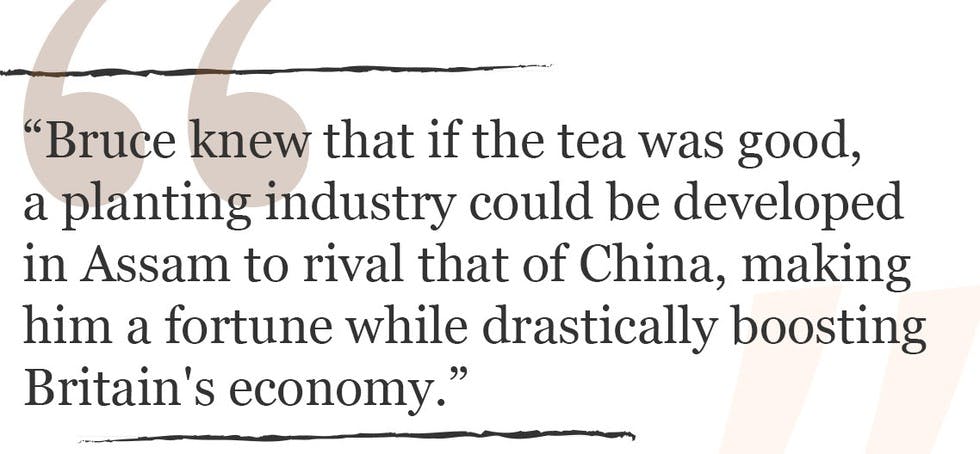
Robert wished to not only collect samples of plants and seeds, but to also ensure the friendship of the Singhpo tribe and long-term access to their tea growing areas. Bruce new that if the tea was good, a planting industry could be developed in Assam to rival that of China, making him a fortune while drastically boosting Britain's economy.
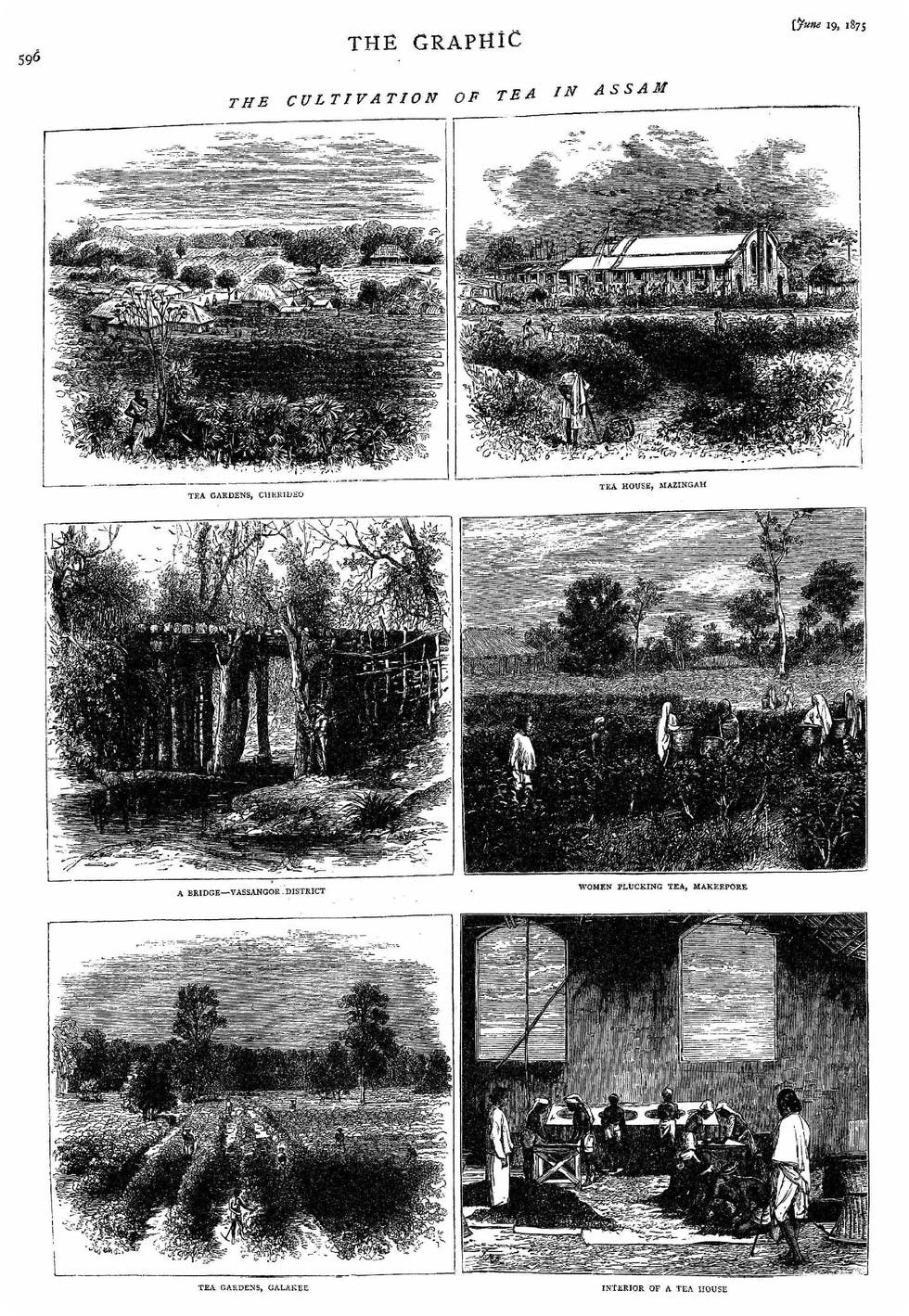
A report on tea growing in Assam from The Graphic - Saturday 19 June 1875 - found with our collection of historic British Newspapers © THE BRITISH LIBRARY BOARD. ALL RIGHTS RESERVED.
Robert's meeting with the tribal chieftain was a success and it was discovered that the brew produced by the plant resembled tea very closely. The tribe permitted Robert to carry away plants and seeds, a decision that would open Assam's doors to an industry that would sustain it for generations to come.
Robert sadly passed away the following year and never lived to see his plantations flourish. His younger brother Charles Alexander Bruce, a soldier who had fought in the First Anglo-Burmese War, continued his brother's mission and went on to become one of the leading figures in the establishment of a tea industry in Assam.
In 1833 the East India Company's monopoly of the Chinese trade came to an end and British merchants were hit hard. The British government became determined to initiate tea-planting in India to offset the damage and, in February 1834, governor general Lord Bentinck set up the Tea Committee. The Committee sent out a circular asking where tea could be grown and Assam was identified as an ideal location.
Charles sent samples of his indigenous plants to Calcutta for study but they were deemed inadequate to the task and an East India company representative was dispatched to obtain seeds from Chinese plants. The attempt to introduce Chinese plants in Assam was a complete failure as they cross-pollinated with the native plant and produced a hybrid that would torment planters for many years to come.
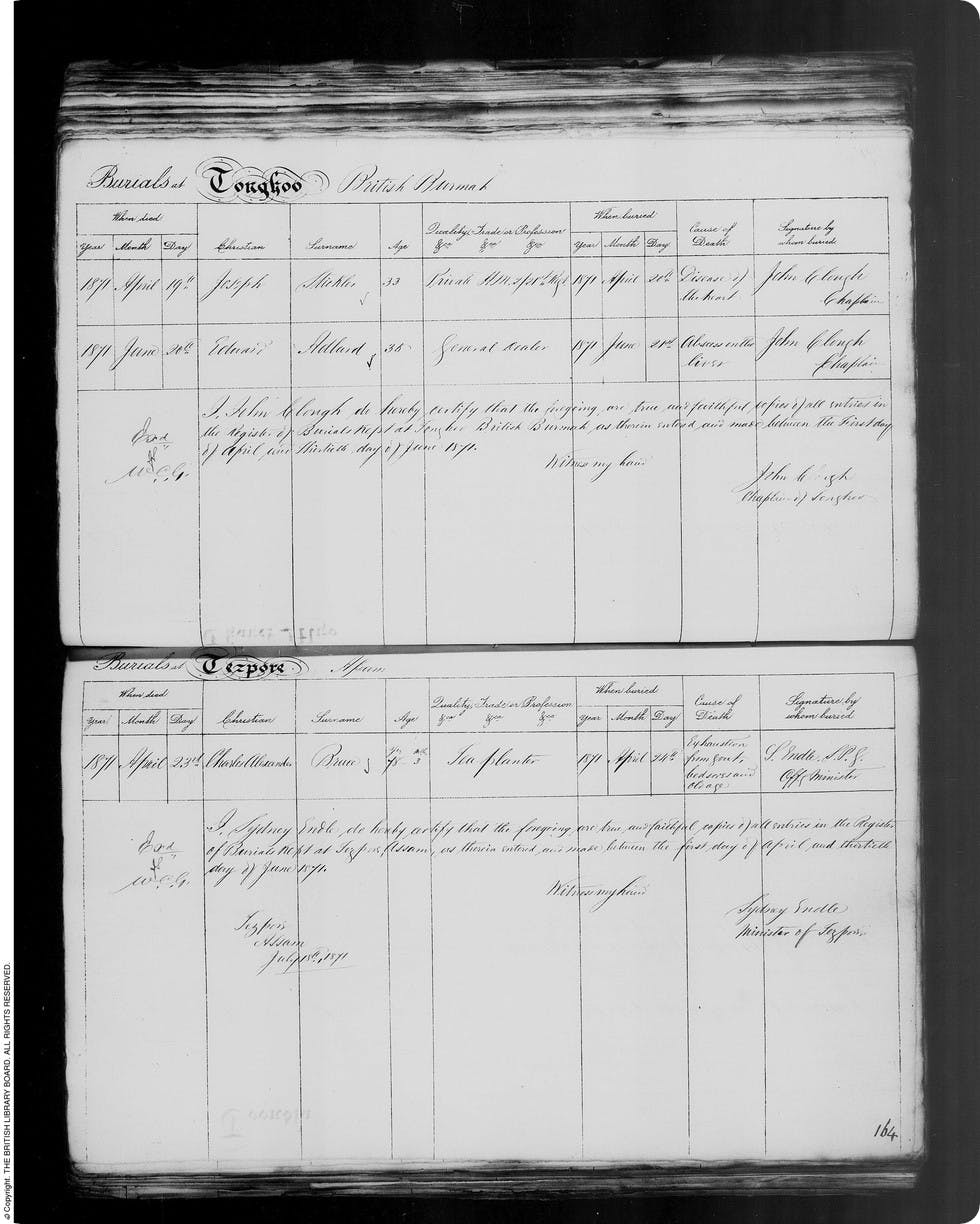
Charles' burial records found in our British India Office collection
Charles did not give up and set up a nursery at Sadiya consisting entirely of native bushes. The plants survived and, with the help of Chinese workmen, Charles managed to quietly dispatch a small sample of manufactured tea to the Committee in 1836. The first samples were approved by the viceroy Lord Auckland and experts determined that the tea was of a very good quality.
In 1837, Bruce dispatched another consignment of 46 chests made entirely from the leaves of the Assamese bush. After removing a portion that had spoilt in transit, 350 pounds in eight chests were sent to London auctions in May 1838. This first consignment was auctioned in London on 10 January 1839.
The Bruce brothers played a key role in seeing that tea flourished in India, thus weakening the hold the Chinese had on the tea trade at the time. By the middle of the nineteenth century tea production had fanned out through India to Darjeelingand Nilgiri, but output there would never rival that of Assam.
In 1871, Charles received the gold medal from the Royal Society of Arts for cultivation of the indigenous tea plants in Assam. He died aged seventy-eight in Assam, and was buried in the Christian graveyard at Tezpur.
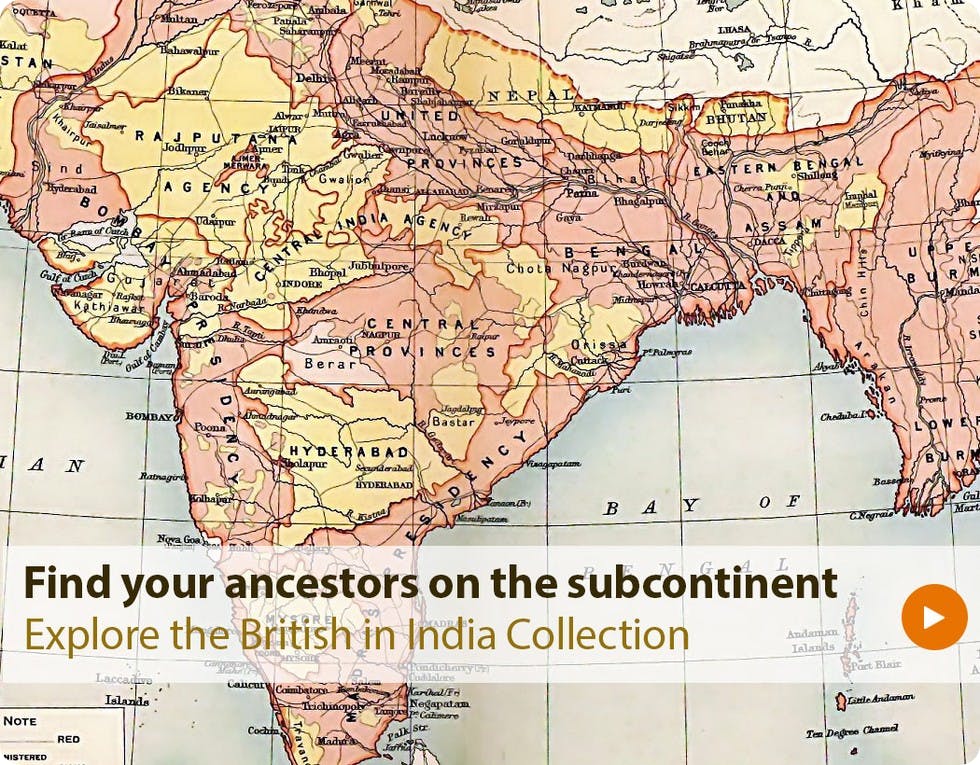
Related articles recommended for you

We found war veterans and healthcare workers within Keir Starmer's family tree
Discoveries

Discover moving new military records
What's New?
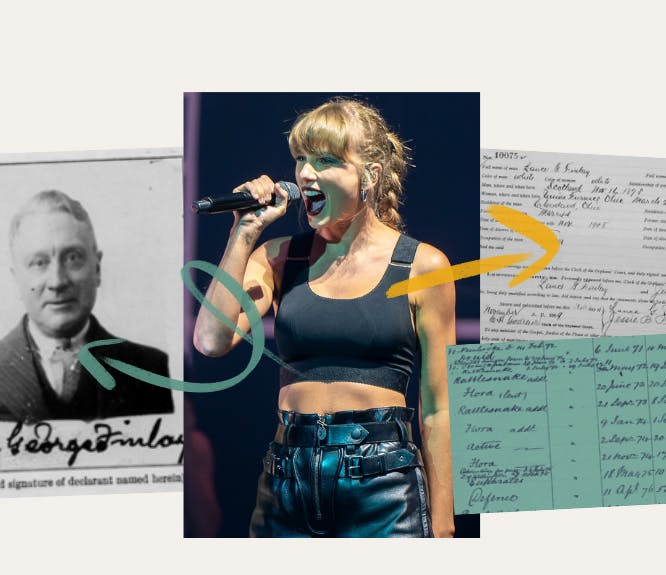
Taylor Swift’s family tree shines with love, heartbreak and the triumph of the human spirit
Discoveries

